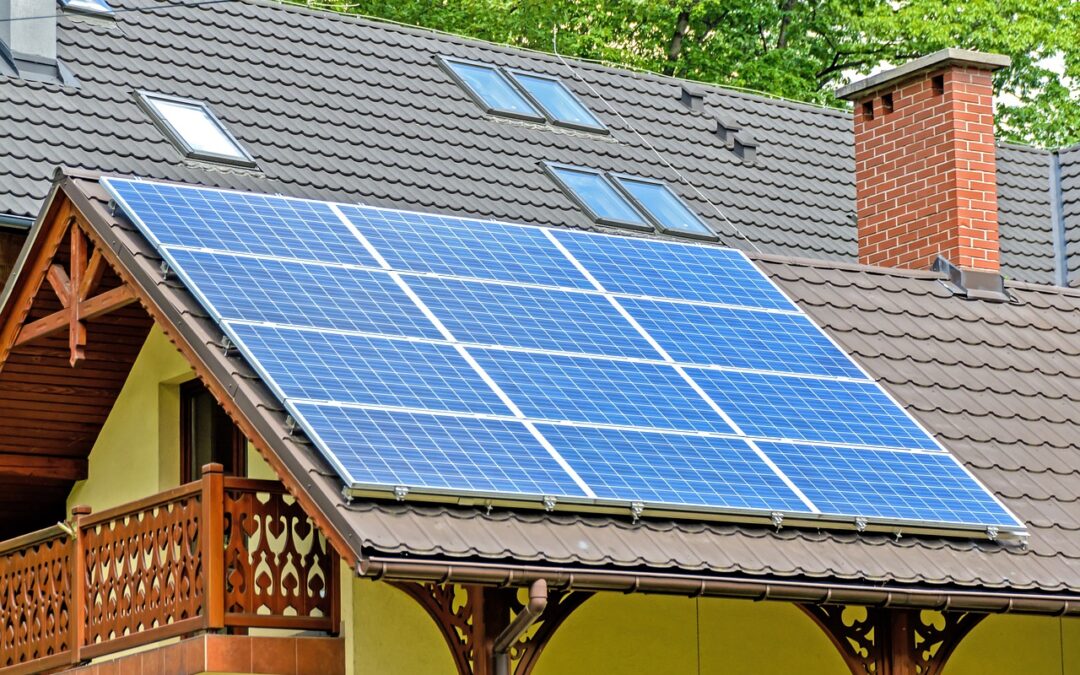Solar energy has many benefits to offer a housing industry that is more invested in sustainability and cost savings for homeowners. Many states have prioritized solar energy and offered a number of incentives for homeowners who choose to install solar panels, with rebates and other incentives allowing what was once out of reach financially for people to be an option.
Solar tax credits are one incentive that has taken center stage in the consideration of sustainable energy. Because of the massive cost savings solar can provide in regard to homeowners’ energy use, along with the reduced cost of solar panel installation these tax credits offer, housing can be made more affordable overall.
What Are Solar Tax Credits?
During the Summer of 2022, the Inflation Reduction Act was signed into law, ushering in a litany of cost-saving measures for citizens and businesses, including energy costs. The Solar Tax Credit provision of the Inflation Reduction Act allows for a 30% reduction in solar costs utilizing a tax credit — an expansion of a previous tax credit that allowed for a 26% reduction in solar costs.
Furthermore, there are bonuses for certain types of solar projects that can generate tax credits of up to 70% of the project cost. There are several aspects of solar energy that qualify under the Solar Tax Credit, including the solar panels themselves, the equipment necessary to get panels up and running, and labor and inspection costs.
Prior to the tax credits going into effect, the cost of installing solar panels on a home could be considerable, averaging between $10,000 to $15,000 for an average-sized 2,000-square-foot home. And while the cost of solar energy for alternative home options such as tiny homes is far lower, solar energy could still be out of reach for many in a housing market that is becoming more and more unaffordable with each passing year.
The expanded solar tax credit applies to new solar installs as well as those installed on or before Dec. 31, 2019, giving those who jumped on the solar opportunity prior to the Inflation Reduction Act a chance to save. While the tax credit will decrease to 26% for 2033 and to 22% for those installed in 2034, this tax credit expiration date does not occur until 2035, at which time Congress could choose to renew it. This far-reaching credit gives many homeowners plenty of time to choose solar as an energy option and save hundreds to thousands of dollars a year on the cost of owning a home.
In order to qualify for the new solar tax credits, the panels must have been installed between Jan. 1, 2017, and Dec. 31, 2034, for a residence owned by the one claiming the credit in the United States. However, those who hold an interest in an off-site community solar project may also qualify for the credit. In addition, the solar installation has to be new — not a repair of an old installation.
The expanded Solar Tax Credit that is part of the Inflation Reduction Act is not the only solar tax credit available to homeowners, though it is one of the most generous and the one currently making headlines amid widespread unaffordable housing issues. The Investment Tax Credit allows homeowners to deduct part of the cost of their solar panel installation from their taxes, but expires on Dec. 31, 2023, as this credit was part of the older incentive predating the Inflation Reduction Act.
Additionally, many states offer their own state tax credits for solar installs that work in tandem with the federal-level credit. Some states also offer a reduction in property taxes for houses with solar installs. Moreover, there are several ways where “going solar” can help make home ownership more affordable and help reduce the carbon footprint of homeowners at the same time.
Making Housing More Affordable
Affordable housing is an issue that has been making headlines, even before the pandemic and seeping inflation wreaked havoc on the housing market. According to studies, 30% of all households had what was deemed “unaffordable” mortgages or rent payments in 2020, which was defined as payments exceeding 30% of the overall household income — a time-tested standard for affordability. The same studies showed that one in seven households paid over half their income in housing costs, an untenable situation for most.
Housing shortages are largely driving the underlying problem of unaffordability, and this has led people to devise alternative housing options such as microunits and co-housing, manufactured homes, and tiny home communities. But with new solar tax credits open to investors, as well as private homeowners, it may be the incentive they need to consider building lower-cost, sustainable housing units and communities — all powered by solar.
Making our homes more energy efficient makes home ownership more affordable overall, regardless of what kind of home one chooses to live in. The Inflation Reduction Act aims to lessen the cost burden of everyday life on the average American, and the solar tax credit provision of the Act provides a way to spur advancements in sustainable, energy-efficient living to bring affordable home ownership options back to the market.
Justin Draplin is CEO of Eclipse Cottages, a Travelers Rest, South Carolina-based sustainable home technology company focused on energy efficiency.
















Great article. It was very informative and illuminating. Thank you!
A bunch of bull crap. There are no significant financial benefits to going solar. You end up paying somebody for the energy used in your home and considering the cost of solar panels, storage batteries, Installation cost, and the life expectancies of the equipment and your roof? Is it pays off to go solar? And If you are a tree hugger, environmentally conscious person? Are you honestly helping the environment by going solar? Look at the items you must dispose of every six to twenty years. And If you are a homeowner? Will a one-time Tax credit of $7500 make your homeownership more affordable? Divide the tax credit by 240 = $32 per month. Does that make home-buying more affordable or it puts billions $ into the Chinese economy and environmental lobbyists pocket like John Kerry, Al Gores, and others?
I did not see anything about the cost of the solar lease..how that affects a buyer’s qualifying..some solar leases are upwards of $30K and cannot be broken or paid early. When someone comes up with a solution for that…more people may be open to solar. Building a better house with more insulation, better windows will help with the cost of heating and cooling. Cookie cutter homes are not the answer, most are boxes with little or no thought to the cost of heating and cooling. Someone has to pay for those government incentives for solar…bet it’s the consumer. I’ve been selling real estate for 50+ years and know that to qualify for that $100-200 month solar lease definitely kicks a lot buyers to the curb since that is on top of their mortgage payment.
YESSSS!!!!!! SPOT ON JACKIE!!! SPOT ON!!!!
If you are going to do solar panels, buy them – don’t lease them. I am a real estate agent in the DFW area an if leasing solar panels, the BUYER has to be approved to resume the lease. I installed solar panels on my home in 2019 and got the 30% tax credit. At the time the solar plans thru the electric providers (Reliant, TXU, etc) were wonderful – selling back to the grid. When my 2 yr plan expired I discovered most the providers no longer offer those great plans. My current plan buys back the excess I produce, but they cap it at the amount I used that month. This means they are using the kwh I produced as excess and are making themselves a profit by selling those back to other consumers! If the gov’t is going to continue to push solar panels, they need to require the providers to buy back ALL excess generated. I feel like the providers have taken away a lot of the incentive to go solar (selling back to the grid).
My 27 panels on an 1856 sf home in Rowlett, TX cost around $27K in 2019. I chose to do solar for “green” reasons, but also to save on electric bill going forward since husband is already retired and on SS income only and I am of retirement age now (not retiring any time soon though). I do save though – my average monthly bill over 12 months is $56 a month when it used to get up to around $300 a month in the Texas hot summers for 4-5 months of the year. It does save on bill and alleviates fears of an unaffordable elec bill once I retire. You do also have to add the cost of the solar panels onto your insured amount for your homeowners insurance, but that didn’t affect the premium that much. My solar company gave a 20 yr warranty on the panels for malfunction but I would have to file a homeowners insurance claim if the panels got hail damage. They are pretty darned durable so far. As they become more prevalent I feel the cost should come down. I would recommend the panels. I wish I could have afforded to do it sooner to reap more benefits. I feel people who own a home and buy solar panels have good benefits if they install them when they are in their 30’s-40’s year age range.
Did appraisals on properties with solar. They cost 35k for a 2000 sqft house in Panama city florida in 2022. If you refi a loan they have to be paid off 1st. Have to pay off the loan before you can sell. they only bring about 10 to 15 in value. and this is with no battery. Also they don’t even power the house they power the grid. So if power goes out and it’s a nice sunny day you get no power. Stupid.